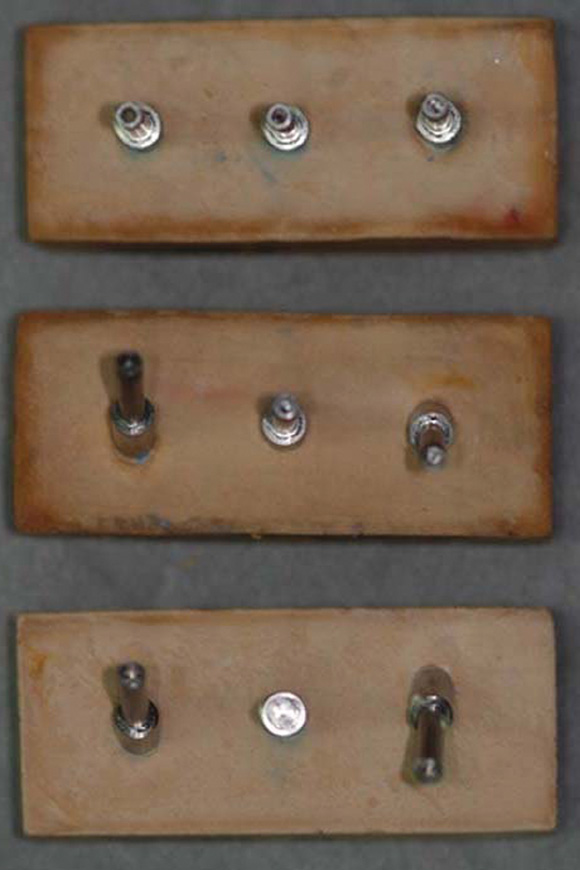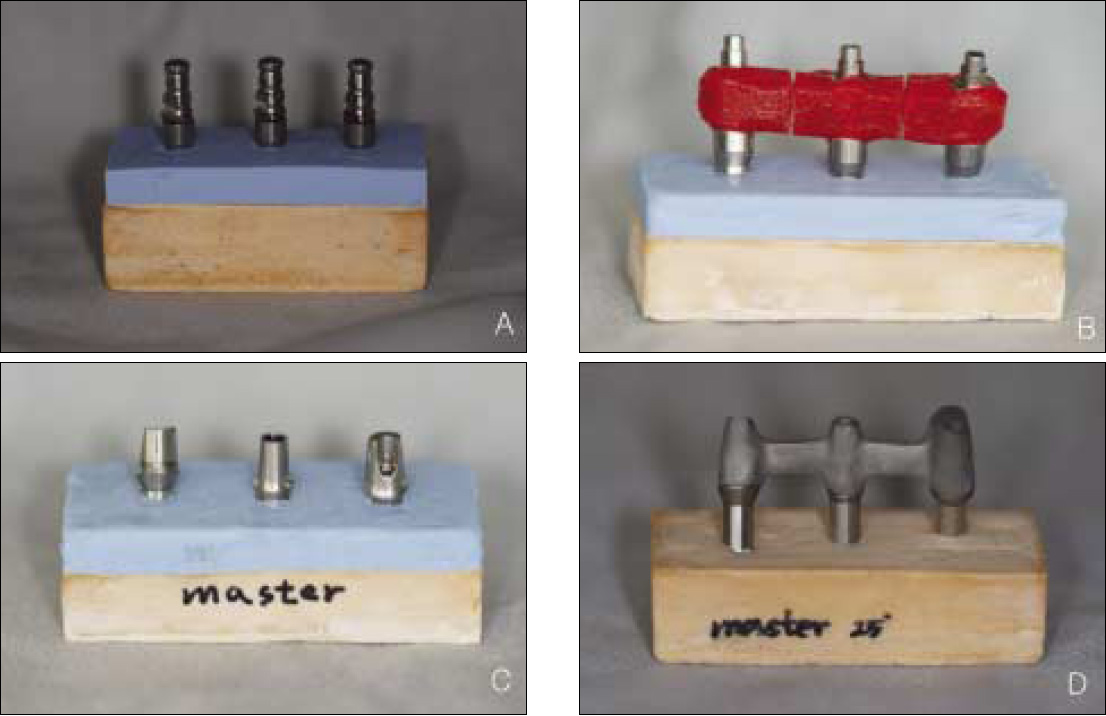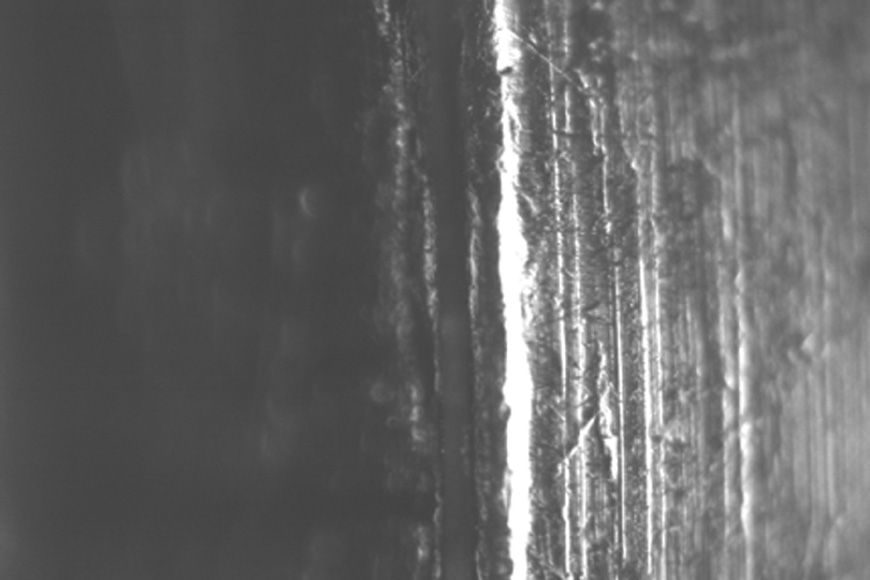J Adv Prosthodont.
2010 Mar;2(1):25-31. 10.4047/jap.2010.2.1.25.
Accuracy of a proposed implant impression technique using abutments and metal framework
- Affiliations
-
- 1Department of Prosthodontics, College of Dentistry, Seoul National University, Seoul, South Korea. silk1@snu.ac.kr
- 2Department of Prosthodontics, Samsung Medical Center, Sungkyunkwan University School of Medicine, Seoul, South Korea.
- KMID: 1975174
- DOI: http://doi.org/10.4047/jap.2010.2.1.25
Abstract
- PURPOSE
This study compared the accuracy of an abutment-framework (A-F) taken with open tray impression technique combining cementon crown abutments, a metal framework and resin cement to closed tray and resin-splinted open tray impression techniques for the 3-implant definitive casts. The effect of angulation on the accuracy of these 3 techniques was also evaluated. MATERIAL AND METHODS: Three definitive casts, each with 3 linearly positioned implant analogs at relative angulations 0, 30, and 40 degrees, were fabricated with passively fitted corresponding reference frameworks. Ten impressions were made and poured, using each of the 3 techniques on each of the 3 definitive casts. To record the vertical gap between reference frameworks and analogs in duplicate casts, a light microscope with image processing was used. Data were analyzed by two-way analysis of variance and the Tukey test.
RESULTS
The open tray techniques showed significantly smaller vertical gaps compare to closed tray technique (P < .05). The closed tray and the resin-splinted open tray technique showed significantly different vertical gaps according to the angulation of implant (P < .05), but the A-F impression technique did not (P > .05).
CONCLUSION
The accuracy of the A-F impression technique was superior to that of conventional techniques, and was not affected by the angulation of the implants.
Keyword
MeSH Terms
Figure
Reference
-
1. Adell R, Lekholm U, Rockler B, Brånemark PL. A 15-year study of osseointegrated implants in the treatment of the edentulous jaw. Int J Oral Surg. 1981. 10:387–416.2. Skalak R. Biomechanical considerations in osseointegrated prostheses. J Prosthet Dent. 1983. 49:843–848.3. Humphries RM, Yaman P, Bloem TJ. The accuracy of implant master casts constructed from transfer impressions. Int J Oral Maxillofac Implants. 1990. 5:331–336.4. Naconecy MM, Teixeira ER, Shinkai RS, Frasca LC, Cervieri A. Evaluation of accuracy of 3 transfer techniques for implant-supported prostheses with multiple abutments. Int J Oral Maxillofac Implants. 2004. 19:192–198.5. Assif D, Fenton A, Zarb G, Schmitt A. Comparative accuracy of implant impression procedures. Int J Periodontics Restorative Dent. 1992. 12:112–121.6. Assif D, Marshak B, Schmidt A. Accuracy of implant impression techniques. Int J Oral Maxillofac Implants. 1996. 11:216–222.7. Vigolo P, Majzoub Z, Cordioli G. Evaluation of the accuracy of three techniques used for multiple implant abutment impressions. J Prosthet Dent. 2003. 89:186–192.8. Vigolo P, Fonzi F, Majzoub Z, Cordioli G. An evaluation of impression techniques for multiple internal connection implant prostheses. J Prosthet Dent. 2004. 92:470–476.9. Assif D, Nissan J, Varsano I, Singer A. Accuracy of implant impression splinted techniques: effect of splinting material. Int J Oral Maxillofac Implants. 1999. 14:885–888.10. Fenton A, Assif D, Zarb G, Schmitt A. The accuracy of implant impression procedures. J Dent Res. 1991. 70:396–399.11. Herbst D, Nel JC, Driessen CH, Becker PJ. Evaluation of impression accuracy for osseointegrated implant supported superstructures. J Prosthet Dent. 2000. 83:555–561.12. Hsu CC, Millstein PL, Stein RS. A comparative analysis of the accuracy of implant transfer techniques. J Prosthet Dent. 1993. 69:588–593.13. De La Cruz JE, Funkenbusch PD, Ercoli C, Moss ME, Graser GN, Tallents RH. Verification jig for implant-supported prostheses: A comparison of standard impressions with verification jigs made of different materials. J Prosthet Dent. 2002. 88:329–336.14. Burawi G, Houston F, Byrne D, Claffey N. A comparison of the dimensional accuracy of the splinted and unsplinted impression techniques for the Bone-Lock implant system. J Prosthet Dent. 1997. 77:68–75.15. Inturregui JA, Aquilino SA, Ryther JS, Lund PS. Evaluation of three impression techniques for osseointegrated oral implants. J Prosthet Dent. 1993. 69:503–509.16. Conrad HJ, Pesun IJ, DeLong R, Hodges JS. Accuracy of two impression techniques with angulated implants. J Prosthet Dent. 2007. 97:349–356.17. Carr AB. Comparison of impression techniques for a two-implant 15-degree divergent model. Int J Oral Maxillofac Implants. 1992. 7:468–475.18. Carr AB. A comparison of impression techniques for a fiveimplant mandibular model. Int J Oral Maxillofac Implants. 1991. 6:448–455.19. Phillips KM, Nicholls JI, Ma T, Rubenstein J. The accuracy of three implant impression techniques: A three-dimensional analysis. Int J Oral Maxillofac Implants. 1994. 9:533–540.20. Choi JH, Lim YJ, Lim SH, Kim CW. Evaluation of the accuracy of implant-level impression techniques for internal-connection implant prostheses in parallel and divergent models. Int J Oral Maxillofac Implants. 2007. 22:761–768.21. Assuncao WG, Filho HG, Zaniquelli O. Evaluation of transfer impressions for osseointegrated implants at various angulations. Implant Dentistry. 2004. 13:358–364.22. Vigolo P, Fonzi F, Majzoub Z, Cordioli G. Master cast accuracy in single-tooth implant replacement cases: an in vitro comparison. A technical note. Int J Oral Maxillofac Implants. 2005. 20:455–460.23. Clelland NL, van Putten MC. Comparison of strains produced in a bone simulant between conventional cast and resin-luted implant frameworks. Int J Oral Maxillofac Implants. 1997. 12:793–799.
- Full Text Links
- Actions
-
Cited
- CITED
-
- Close
- Share
- Similar articles
-
- Comparative accuracy of new implant impression technique using abutments as impression copings with an angulated implant model
- Comparative accuracy of the splinted and unsplinted impression methods for internal connection
- Comparison of the accuracy of implant digital impression coping
- A COMPARISON OF ACCURACY BETWEEN FIXTURE IMPRESSION AND ABUTMENT IMPRESSION FOR DENTAL IMPLANTS
- Digital intraoral impression for immediate provisional restoration of maxillary single implant: A case report






